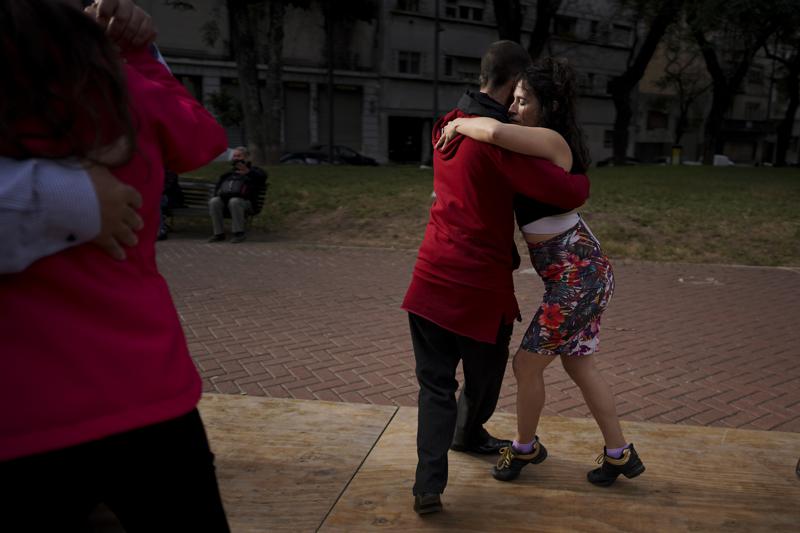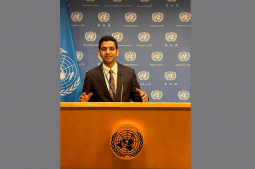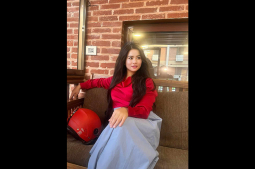Jay-Z’s Made In America festival canceled for the second year in a row
26 days ago

BUENOS AIRES
In a huge ballroom in a Buenos Aires basement, the tables are stacked. On the orchestra stage, the piano lid is closed near unplugged speakers and billboard images of tango celebrities.
The empty, dark dance floor at the Viruta Tango Club is a symbol of the pandemic-induced crisis facing dancers and musicians of an art form known for close physical contact and exchanging partners.
Like other venues of its kind, the Viruta club has been closed since March 8, 2020, around the time that Argentine authorities decreed a strict quarantine in hopes of reducing the spread of COVID-19. The club used to host hundreds of tango dancers between Wednesday and Sunday.
“For those of us who make a living from tango, our self-esteem is on the floor,” said Horacio Godoy, a dancer, historian and club organizer who walked across the Viruta dance hall, which, when in full swing, recreated the atmosphere of the 1940s era when tango became a wildly popular entertainment.
“We are more emotionally than financially bankrupt,” Godoy said.
Equally damaging has been the closing of borders, preventing the arrival of tourists, the main source of financing for the local tango industry. Tango tours abroad have also been canceled as Argentina continues to suffer high coronavirus caseloads more than a year after the pandemic began. There have been more than 80,000 confirmed deaths from COVID-19 in the country.
Godoy, who earns some money by teaching virtual tango classes to foreigners, said that funds for dancers and musicians from the mayor’s office are not enough to pay for expenses at the Viruta club. Of 18 employees, only three have kept their jobs.
“The city of Buenos Aires can’t offer history like Rome and Paris. It doesn’t have a beach to offer like in the Caribbean. It doesn’t have gastronomy on offer like Italy. It doesn’t have waterfalls or glaciers. The city of Buenos Aires has tango,” he said.
According to the Federal Assembly of Tango Workers, the cultural mainstay had employed some 7,000 people throughout Argentina. But between 2020 and this year, some 40 tango clubs out of a total of 200 in Buenos Aires have closed permanently.
Before the pandemic, there were about 40 tango footwear and apparel companies and now a dozen survive, the group said.
Although it’s a symbol of Argentine culture, tango does not get any specific subsidies.
“Tango workers suffered from permanent job insecurity long before the pandemic,” said Diego Benbassat, a musician with the “Misteriosa Buenos Aires” orchestra and spokesman for the tango workers assembly. “There were never public policies designed for tango, so that is why we are so vulnerable.”
Mora Godoy, who once taught tango steps to Barack Obama and received standing ovations for her international performances, has had to close her dance school.
“I did 419 shows with my tango company in 2019. We had done more than 100 in 2020 by the time everything was closed and this madness, this sadness, this world tragedy began,” she said.
A corner of her apartment is decorated with images of the dances that marked her life before the pandemic. One of her favorites: then-President Obama resting his hand on her bare back, taking steps to the beat of “Por una cabeza” by Carlos Gardel, during an official visit to Argentina in 2016.
“It is very painful not to be able to dance,″ said Godoy, adding that some tango professionals had turned to taxi-driving and selling groceries to make a living. She said entrepreneurs who previously made a lot of money from running tango clubs had done little during the pandemic to help the professional dancers who had been so important to their profits.
“Everything froze,” said musician and dancer Nicolás Ponce, who started a business selling indoor and outdoor plants during the pandemic.
The essence of tango, he said, is what makes it so difficult to perform in the current health emergency.
“A bit of the success of tango is its corporality, the act of embracing each other,″ he said. “In life one does not hug everyone. .... That feeling of embrace is what makes tango stand out from other dances.”
Nostalgia for that hug makes many tango dancers, or tangueros, defy restrictions to dance in outdoor spaces.
On a recent Saturday, a dozen couples got together to dance at the Obelisco, an emblematic monument in the center of Buenos Aires, some even without a mask.
“Tango in the open air is health. What is dangerous is stillness,” read a sign posted on the sidewalk by dance teacher Luciana Fuentes.
“We not only have COVID. I am afraid that one day my muscles will forget to dance. I do it alone with a broom every day in my house, ” Fuentes said.
“I am not anti-quarantine. I do not think that COVID does not exist. I take my precautionary measures, but ... I will not stop dancing tango in public spaces.”

- by Republica

- by Republica

- by Republica

Leave A Comment